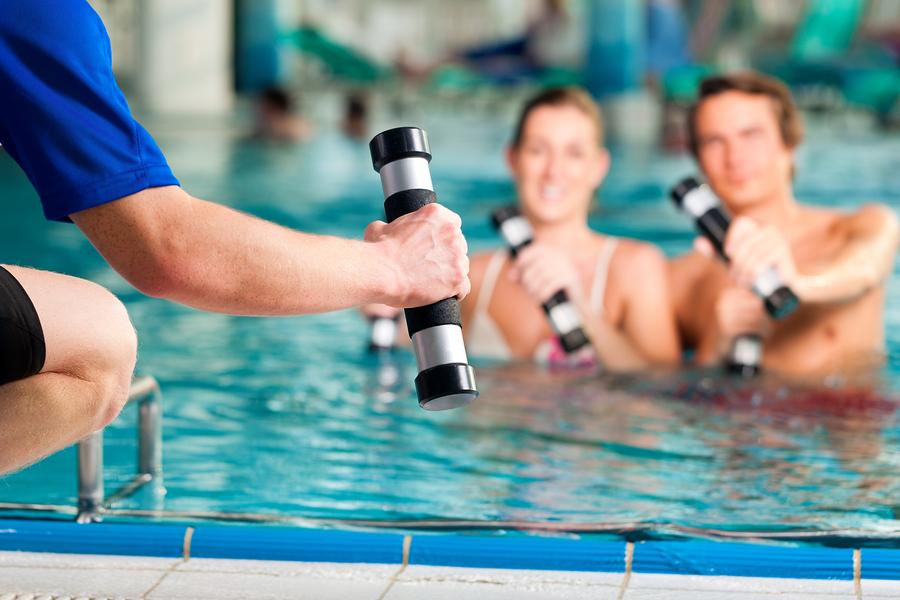Arthritis is one of the most common conditions that an orthopedic doctor will come across. It is unfortunately inevitable for a large number of people and, although it can be treated, there is not a definitive cure. Chronic pain is one of the most severe side effects of arthritis and is most often treated with strong painkillers. However, this can actually become a problem in itself as the damage these medications do to the body over time can be significant.
Using exercise to alleviate the symptoms of arthritis is a great alternative to medication and will help to protect the body against further loss of function. Although medication can often not be avoided when this condition develops, it is possible to lower dependancy on medication by making an effort to stay healthy in other ways. If you are currently taking a high dose of painkillers for your arthritis, then it is a good idea to talk to your healthcare professional about utilising exercise to lower this dependancy.
Many people who are suffering with arthritis worry that physical exercise will cause damage to their joints and bones, and therefore try to avoid it altogether. Research into the condition has shown that regular low-impact exercise is actually the best way to effectively reduce pain of this type without resorting to medication. It has also been proved to be effective in helping retain the range of movements that people with arthritis will lose over time.
A combination of flexibility exercises as well as general aerobic exercise is arguably the best option for those suffering with arthritis. As mentioned in the paragraph above, flexibility exercises will help with the range of motion, whereas aerobic exercises will help to increase the strength of the heart and improve the efficiency of the lungs. It will also help to decrease fatigue and boost stamina which are two things that can greatly improve the quality of life of someone with this condition.
Aerobic exercise is a useful tool for keeping a persons weight down. Weight gain can become a problem when arthritis develops due to a decrease in activity. Medications to relieve the symptoms of arthritis can also often cause weight gain, so there are many different things to consider when it comes to weight management.
The combination of a healthy diet should be used in conjunction with regular exercises in order to combat this issue. Your doctor will be able to advise you as to a healthy eating program that will compliment your exercise efforts. A few simple changes you can adopt are to avoid alcoholic and other high-calorie drinks, always include a range of vegetables with your meals, and avoid adding calorific sauces and sides to meals. Portion control is also key to keeping weight gain at bay, as well as snacking on healthy options throughout the day, such as fruits, nuts and seeds.
Great flexibility exercises are weight lifting and yoga, and useful aerobic exercises are walking, swimming and cycling. In fact, swimming is one of the best things you can do as the impact on the joints is virtually non-existent. If swimming is not your thing then you can always try aquatic exercises as this involves the benefit of being in the water without any actual swimming!
Water is fantastic for cushioning the joints, which is especially useful if they are painful and stiff. The more immersed in the water you are, the less weight your body has to bear. Being underwater also creates a lower centre of gravity, which promotes the flow of blood to the heart from your extremities. Water is also good at cooling your body to protect you from overheating while you exercise. However, it is important to remember that you will still sweat during a water workout so it is important to hydrate.
Water workouts have been heralded as a fantastic way to alleviate the pain associated with arthritis, as well as being great for building strength and getting a good cardio workout. In addition to being useful for your physical health, water workouts can also be incredibly relaxing which is beneficial for your mental health. Quite a range of existing exercises can be adapted to the water, with aerobics and circuit training being amongst the most popular. Certain exercises that require equipment have also been adapted for the water. Such things include free weights, resistance tubing and even underwater bicycles and treadmills!
Before you begin a new exercise routine to attempt to relieve the symptoms of your arthritis, you should always consult with your doctor. They will be able to assess your condition to establish the frequency and intensity that will be suitable for you. You will then be able to embark upon your new exercise schedule confident that you will only be doing good things for your body!
References
1) http://www.arthritis.org/living-with-arthritis/exercise/benefits/exercise-knee-osteoarthritis.php
2) http://www.everydayhealth.com/rheumatoid-arthritis/how-to-lose-with-rheumatoid-arthritis.aspx
Related Posts
Cigarettes May Inhibit Inflammation Treatments
Axial spondyloarthritis, also known as AxSpa, is a chronic…








